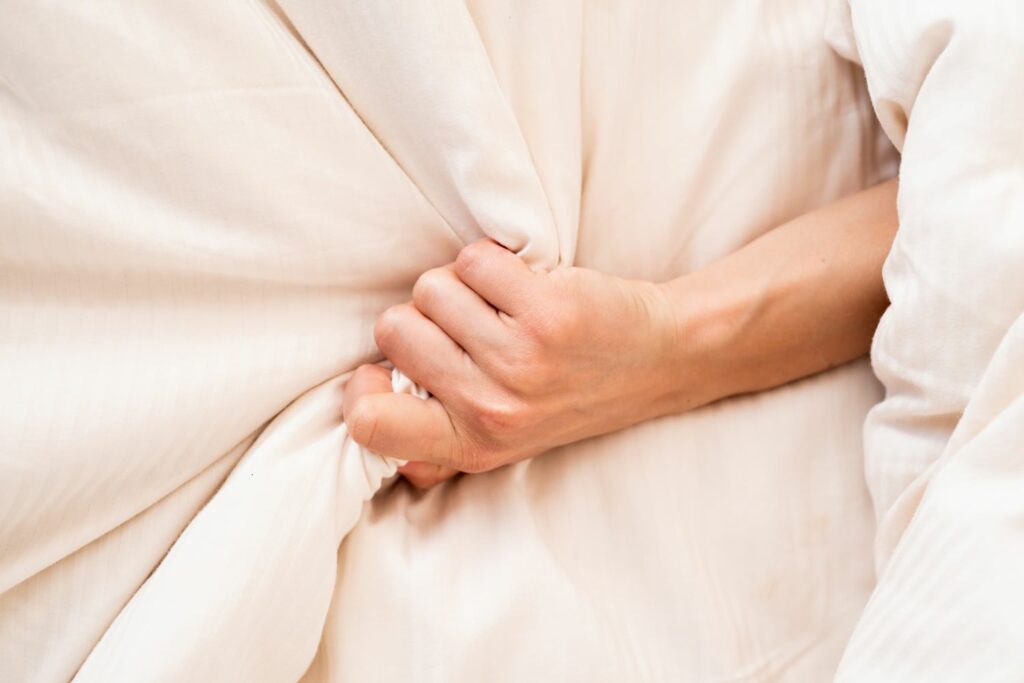Hey, pleasure-seekers! Prepare to embark on a captivating journey into the enchanting realm of orgasm —an exploration that delves deep into the intricacies of what makes these euphoric experiences tick. Today, we’ll unravel the tapestry of pleasure, unveiling the diverse types of orgasms that await your exploration. But this isn’t just a mere tour; it’s a thrilling expedition into the electrifying science that orchestrates the symphony of sensations leading up to the coveted big O.
The Arousal Symphony: Physiological Factors
Have you ever wondered what is going on behind the scenes during an orgasm? Well, it turns out that it is a bit of a mystery. Despite all our advancements in psychology and medicine, the science of orgasms is still somewhat enigmatic. The sexual response cycle, as laid out by pioneers William Masters and Virginia Johnson, unfolds in four stages: excitement, plateau, orgasm, and resolution.
In the excitement phase, your body gears up with increased heart rate, blood pressure, and breathing. Muscles tense, blood rushes to the genitals, and for vulva owners, the walls of the vagina swell. The plateau phase cranks things up, setting the stage for the climax. Muscle contractions may extend beyond the genitals, and for penis owners, the testicles draw into the scrotal sac. Then, the grand finale—the orgasm. Muscle contractions ripple through the body, releasing sexual tension. Vulva owners experience contractions in the vagina and uterus, while penis owners have theirs in the pelvic floor region.
Finally, the resolution phase brings everything back to baseline. Swelling decreases, breath slows, and there is a longer refractory period for penis owners. This difference allows vulva owners the potential for multiple climaxes in a shorter time. Science, right?
Beyond the Basics: Exploring Types of Orgasms
Orgasms are not limited to the typical penile or clitoral stimulation. Erogenous zones, such as nipples or the anal region, play a starring role. Enter the myriad of orgasm types: anal orgasms, blended orgasms, pressure orgasms, and tension orgasms.
Blended orgasms orchestrate pleasure from multiple erogenous zones simultaneously, like a symphony of sensations. The pressure orgasm revels in applied pressure, while tension orgasms arise from stimulating a tense area. And let’s not forget the elusive nocturnal orgasm or wet dreams during REM sleep.
The Brain on Pleasure: Neurochemical Magic
Have you ever wondered why arousal feels like a temporary escape from reality? Well, the brain’s lateral orbitofrontal cortex—the logical part—takes a back seat during arousal, reducing inhibition. MRI scans reveal a surge of chemicals and hormones during the sexual response cycle, creating peak physical and emotional pleasure. Dopamine, the pleasure hormone, delivers satisfaction and motivation. Oxytocin, the cuddle hormone, fosters attachment. Melatonin sneaks in, inducing sleepiness post-orgasm. Endorphins and desmopressin join the party, enhancing closeness and reducing pain levels.
Achieving the Ultimate Pleasure, It is a Journey
Orgasms are incredible, but just one slice of the pleasure pie. Exploring diverse pleasure zones heightens your chances of experiencing multiple types of orgasms. If you’re in the 10% to 15% struggling to reach orgasm, fear not; you’re not alone. Knowledge, practice, and patience can pave the way to unlocking your pleasure potential. So, there you have it, a fun trip through the science behind orgasms. Buckle up, experiment, and remember, pleasure is your playground. Explore, enjoy, and revel in the electrifying world of the big O! Stay tuned for more pleasure-packed insights from your pleasure pioneer.
Contact us by calling 407-972-0924 for sexual education guidance, or visit us at 2901 Curry Ford Rd #106, Orlando, FL 32806. The BLISS Health team is waiting for you to embark on a journey of informed choices and empowered living. Take the first step toward a healthier, more fulfilling life.



